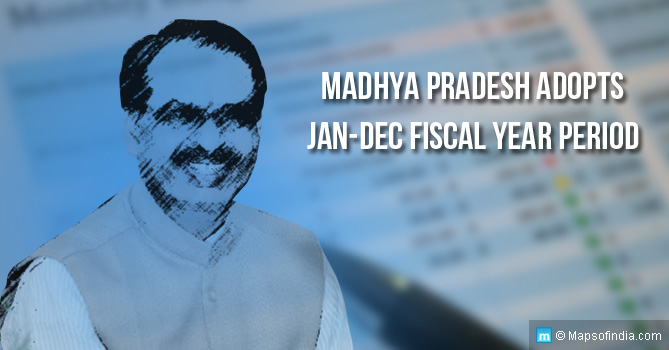Late last month, Indian Prime Minister Narendra Modi had indicated that his government would consider doing away with the colonial legacy of adhering to the April – March financial year cycle. Such a move could mean reworking the entire budgetary and tax filing systems. Before the union government could study the consequences of such a shift and present this idea to the union cabinet, the Madhya Pradesh government has decided to move the budget cycle of the state to coincide with the calendar year- from January to December.
The Public Relations Minister of Madhya Pradesh said, “The state cabinet in its meeting chaired by Chief Minister Shivraj Singh Chouhan today decided to shift the financial year to January-December. So, now the Budget session of the next financial year will be held either in December 2017 or January 2018”.
The state government directed its various departments to come up with accurate quarterly financial reports and budget utilization road maps to smoothen the process. The state government will conclude the activities of the current financial year by December and thus make the transition.
Facilitating Agrarian Cycles
One of the major arguments made in favour of moving to a January-December financial cycle is that such a fiscal year would be more in sync with the agricultural cycle. India is still largely an agrarian economy and such a cycle would make it possible for the state to come up with schemes depending on the crop output and yield. Also it will allow for all construction activities to be undertaken by the state exchequer before the onset of monsoon. This is also the logic that the MP government has put forth in favour of changing its financial cycle. Critics, however, claim that the Indian economy is becoming less dependent on agriculture which accounts for about 17 percent of the GDP. The costs associated with amending all the laws and making the shift in the fiscal cycle on a national level is also likely to be very high.
Unanswered Questions
While the MP government’s move has the approval of the state cabinet, there are a number of unanswered questions that crop up –
- Is the MP government’s move a formula for widespread confusion when it comes to trade and economic cooperation with other states who still follow the April-March FY?
- Indian citizens and businesses still follow the April-March cycle when it comes to filing taxes. Will this abrupt change by one single state cause confusion and misery to the people and businesses in MP?
- Will other states follow suit and move their budgetary cycles to January-December?
- Is this move by the BJP-led state government indicative of a similar move by the central government? The NaMo government has proved its capacity for bold unconventional moves with initiating the demonetization of November 2016. Is this the next change?
In Sync With Global Economy
Last month speaking at NITI Aayog’s governing council meeting, Prime Minister Narendra Modi had suggested making a shift in the financial and accounting year to keep up with the global economic structure. The union government had also constituted a panel eminent economist Shankar Acharya to consider the “desirability and feasibility” of making such a change. The panel has submitted its report to the cabinet.
India adopted the April-March financial year cycle nearly 150 years ago, in 1867, to align itself with the British system of accounting. This is not the first time that the Bharatiya Janata Party-led government is coming up with a break in British tradition (followed by independent India). Since 1924, the union budget of India had always been presented at 5 pm, which made it roughly midday in London. In 2001, under the leadership of PM Atal Bhihari Vajpayee, the budget presentation time was shifted to 11 am IST.
This year, the date of union budget presentation was also brought forward from end February to the 1st of February. This itself may be indicative that the government is readying the nation for a change in financial cycle, experts suggest.






